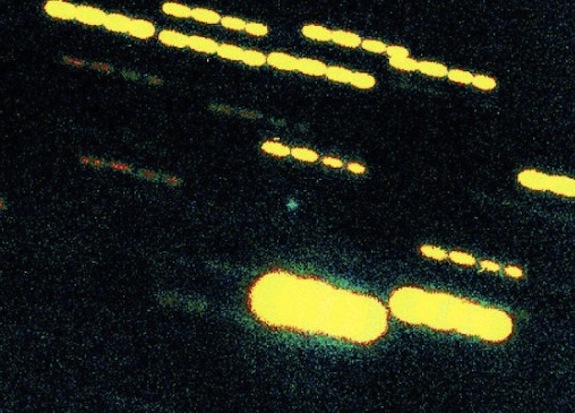This Meteor Shower Is So New It Doesn’t Even Have a Name
For the first time, debris from the comet Wirtanen may cross paths with the Earth

The comet Wirtanen, the little green dot right in the middle, was discovered by Carl Wirtanen in 1948. Photo: ESO
Looking up to the dark night sky and admiring the transient trails of a meteor shower—a spectacle of light that, in many cases, can be traced back for hundreds or even thousands of years—can give a certain sense of wholeness in the human experience. People scattered across time and space have sat, looking up, watching pretty much the same celestial show that you are now taking in.
Though meteor showers are often steeped in legacy, the next few days may present the opportunity for an entirely new spectacle. NASA announced yesterday that the debris trail left behind by the comet Wirtanen may, for the first time, cross paths with the Earth. The new meteor shower is so new, and there is enough uncertainty as to whether or not it will actually happen that astronomers are holding off on giving it a name. But, if all goes to plan, look for the meteors in the early evening over the next couple of days, streaming in from the Pisces constellation.
If the prospect of camping out in the cold for a chance at an entirely novel human experience isn’t convincing enough, says NASA, the same time window will also host the recurring Geminid meteor shower. So, one way or the other, you’ll be seeing chunks of space debris burning up in the atmosphere.
More from Smithsonian.com:
Behold, the Geminids
/https://tf-cmsv2-smithsonianmag-media.s3.amazonaws.com/accounts/headshot/smartnews-colin-schultz-240.jpg)
/https://tf-cmsv2-smithsonianmag-media.s3.amazonaws.com/accounts/headshot/smartnews-colin-schultz-240.jpg)